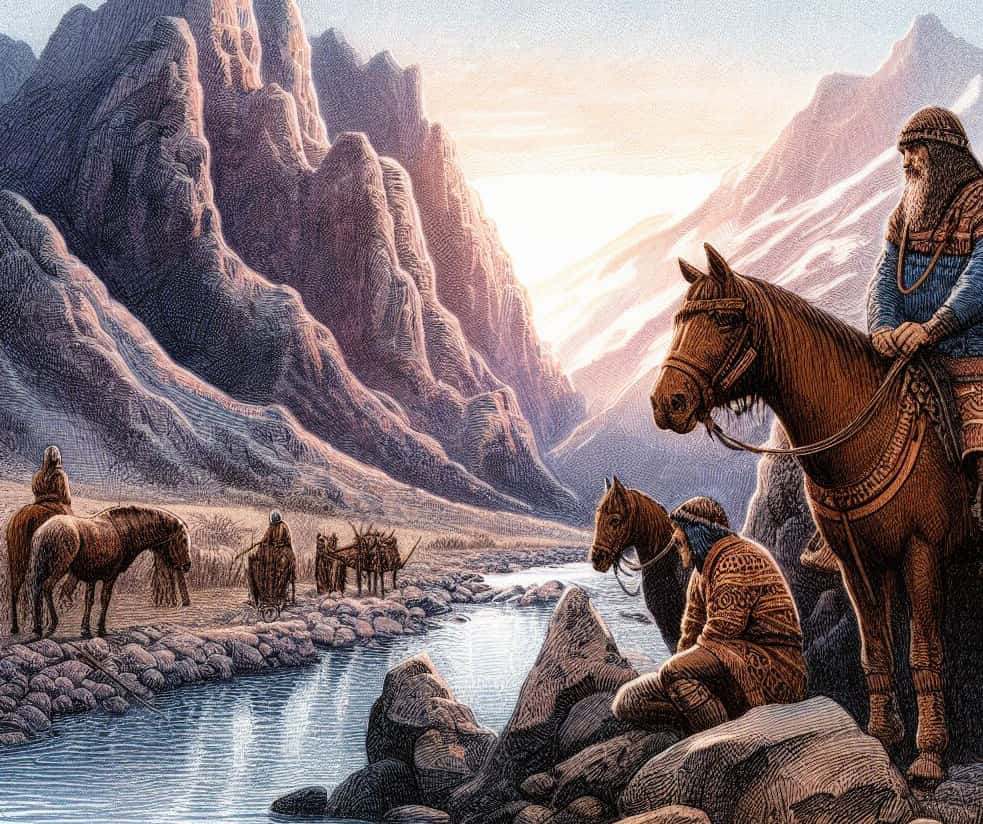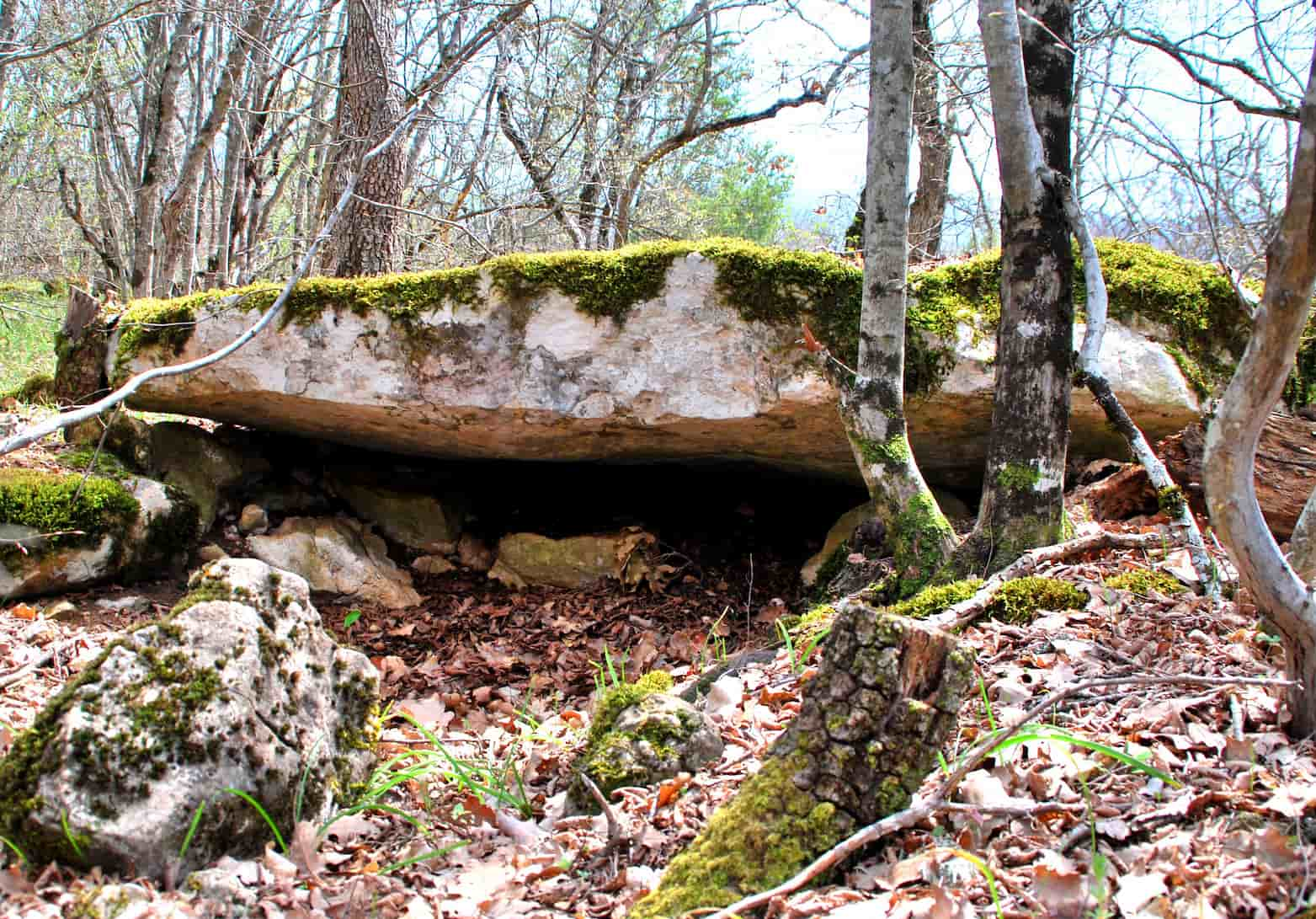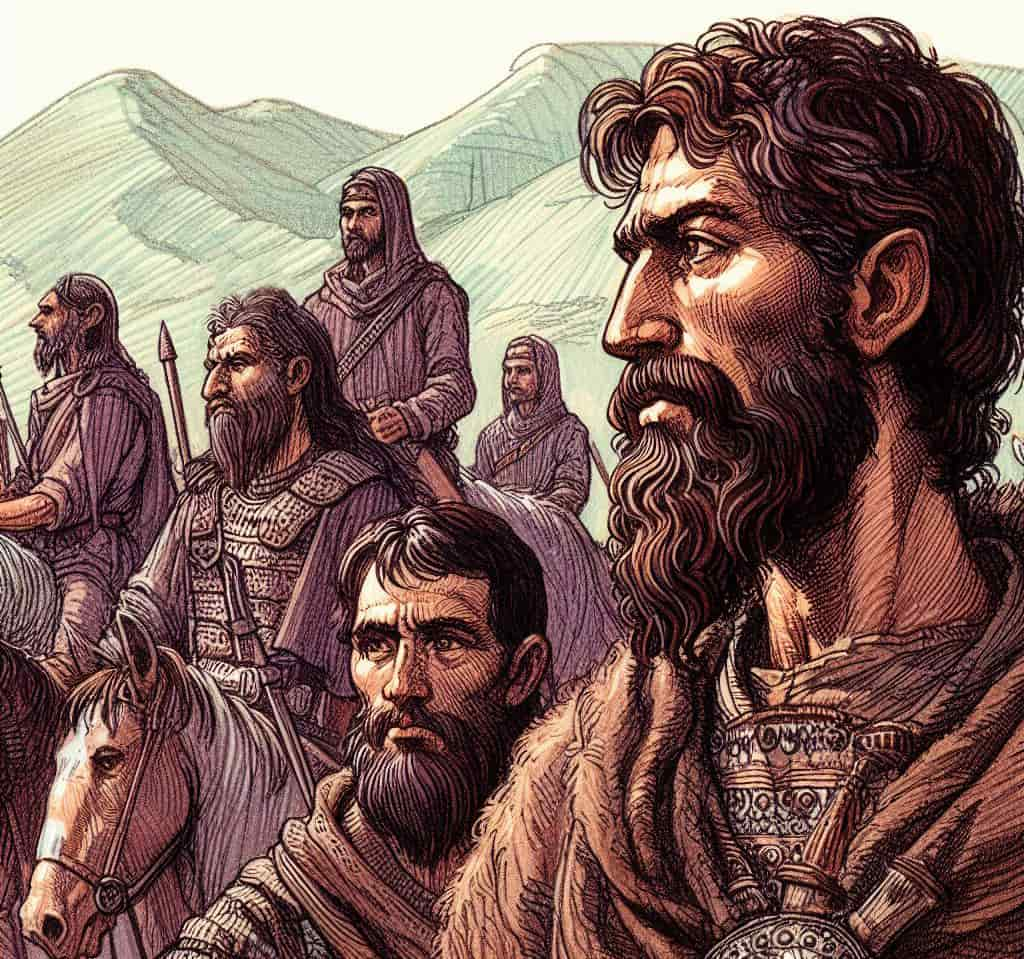The Tauri, or Tauri-Scythians (Latin: Taurus, Tauros), were a tribe who lived in the mountainous and foothill parts of Crimea in the 1st millennium BCE, between the mountains facing the Pontic Sea, between Kerkinitis (Yevpatoria) and Chersonesus (Bosporan Kingdom). The Tauri were initially mentioned in the sixth century BCE and were not mentioned again until the first century CE. Herodotus claims that the people of the Taurians were fierce warriors because they domesticated bulls during the Neolithic period (7000–3000 BCE) in the territory of ethnic Ukraine. The Greeks called these people “Ταῦροι” and the Latins called them “Tauros,” and both names are derived from the ancient symbol of a bull. This concept remained until 64 BCE–23 CE, as described by Strabo.
Their Early History
In his account of the sinking of a Roman fleet carrying the prefect and a cohort in 49 CE, the Roman historian Tacitus made reference to the territory of the Tauri. This ancient tribe is also the name of the Taurus constellation since the tribe has deep historical roots in the Crimean Peninsula and the surrounding regions. Tauri were originally Cimmerians who helped establish the Greek colony of Kimmerikon (located about 30 miles south of Kerch in Crimea) as a southern outpost of the Bosporan Kingdom.
After the Scythians conquered the Crimean Peninsula and assimilated the Tauri, the combined people became known as the “Tauri-Scythians,” and the region was renamed the old Taurica (also the Roman name of the Crimean Peninsula). The Tauri were profoundly impacted by Greek civilization and ultimately accepted its culture and religion. According to Herodotus, Thoas, who reigned approximately 1250 BCE, was the first king of the Tauri.
In Greek mythology, Thoas was the son of Borysthenes, the God of the Dnipro River.
Taurians continued to pose a significant military danger in the area, engaging in Black Sea piracy and launching attacks from their stronghold of Balaklava even after the Greeks and Romans had conquered the coast. Also, back in the second century BCE, like the Greeks, the Taurians were a subordinate and ally of the Scythian monarch Skilurus, with whom they shared ownership of the Crimean steppes, the lower Dnieper, and the Southern Bug River.
Their Origin
- Several theories attempt to explain the origins of the Tauri. Some suggest a connection to the Thracians, tracing their lineage to the Taurisci, who in turn are associated with the Tivertsi, an early Slavic ethnic group.
- Another theory proposes the Tauri’s descent from specific Cimmerian groups, considering them local aborigines.
- There’s also speculation about the remnants of Indo-Aryan settlements in Crimea.
- Alternatively, it’s conceivable that these people were carriers of the Bronze Age Koban culture from the North Caucasus who migrated to Crimea and influenced the timber-grave culture, suggesting a possible Caucasian ancestry for the Tauri.
However, it is more likely that the Taurisci were a subgroup of the Tauri (later Tivertsi) because, according to Pliny the Elder, the Taurisci (Noricis) migrated from Gaul to “Norian” (modern Eastern Bavaria, the northern part of the province of Salzburg, Austria) around 350 BCE.
The Dacian tribe Taurisci (Noricis) moved west of the Carpathians between 218 and 201 BCE, settling in the area of the Dniester, Bug, and Prut rivers in the Black Sea basin; they were later labeled as a subgroup of the Tauroscythians.
Ammianus Marcellinus, writing in the fourth century CE, identified the Arihi, Napei, and Sindi as members of this formidable Tauri tribe.
References to Tauri (Taurians) in History

Herodotus’ The Histories, Book 4, provides the first record of the Tauri. As a people, they didn’t want to help the Scythians battle Darius.
After the Scythians had made this speech, the kings who had come from the nations deliberated, and their opinions were divided. The kings of the Geloni and the Budini and the Sauromatae were of one mind and promised to help the Scythians; but the kings of the Agathyrsi and Neuri and Maneaters and Black-cloaks and Tauri gave this answer to the messengers: “Had it not been you who wronged the Persians first and began the war, what you now ask would seem to us right, and we would listen and act together with you. But as it is, you invaded their land without us and ruled the Persians for as long as god granted; and the Persians, urged on by the same god, are only repaying you in kind. But we did these men no wrong at that former time, nor do we intend now to wrong them first; but if the Persian comes against our land too and begins the wrong-doing, then we will not accept it, either; but until we see that, we shall keep to ourselves. For in our judgment the Persians have not come for us but for those who were the agents of wrong.“
Herodotus, The Histories, Book 4, chapter 119, section 1 (tufts.edu)
Herodotus states that the Tauri lived in the mountains between Kerkinitis and Chersonesus, which is roughly the area between Yevpatoria and the Kerch Peninsula. He goes into detail on the savage rituals practiced by this group, including the sacrifice of shipwrecked sailors and any Greeks they catch at sea to the goddess Parthenos (Virgin), a local god identified by the Greeks with Artemis. According to Herodotus, the only things the Tauri did were fight and steal from other people.
Among these, the Tauri have the following customs: all ship-wrecked men, and any Greeks whom they capture in their sea-raids, they sacrifice to the Virgin goddess as I will describe: after the first rites of sacrifice, they strike the victim on the head with a club; according to some, they then place the head on a pole and throw the body off the cliff on which their temple stands; others agree as to the head, but say that the body is buried, not thrown off the cliff. The Tauri themselves say that this deity to whom they sacrifice is Agamemnon’s daughter Iphigenia. As for enemies whom they defeat, each cuts his enemy’s head off and carries it away to his house, where he places it on a tall pole and stands it high above the dwelling, above the smoke-vent for the most part. These heads, they say, are set up to guard the whole house. The Tauri live by plundering and war.
Herodotus, The Histories, Book 4, chapter 103, section 3 (tufts.edu)
Herodotus and several archaeological digs point to the Tauri’s primary economic activities being cattle raising, farming in river valleys, and fishing in coastal waters. Although culturally inferior (living in the Bronze Age when their neighbors had already developed iron tools), the Tauri still constructed and fortified towns, which they used to effectively fend off attackers, including the Romans, for a considerable period of time.
The Tauri-Scythians are a historical group of people that resulted from the intermarriage of Tauri and Scythians when the southern Scythians, their neighbors, were driven into the Crimean Mountains by the Sarmatians. The Tauri gave their name to the Crimean Peninsula, which was also known as the Taurica to the Tauri.
The Language Tauri (Taurians) Talked
Between the 9th and 7th centuries BCE, the proto-state between Taurida (or Taurica) and Sindica (modern Taman) was known in ancient texts as the Cimmerian Bosporus, and its inhabitants (the Cimmerians) spoke the Iranian language. After the 7th century BCE, a sizable minority remained in Taurida and, with the help of the Scythian language, which is based on the Iranian language, merged with the Scythians, taking on the name “Tauri-Scythians.”
Thracians and Celtic tribes, the Gauls, pressured the Scythians from the west, resulting in the demise of the Tauri-Scythian economy in the late 4th century BCE, when the Scythians were beaten by the king of Thrace, Lysimachus. The Tauri-Scythians, along with some of their country and people, were colonized by the Celts and the Thracians.
The Scythian coalition of tribes, Scythia, became a part of Sarmatia when the Iranian-speaking Sarmatians invaded from the east into the Northern Black Sea area in the 2nd and 1st centuries BCE. Later linguistic research verified the existence of Iranian-derived vocabulary and the contribution of Scythians and Sarmatians to Ukrainian ethnogenesis.
On the northern shore of the Black Sea, in the 7th century BCE, there were Greek colonies inhabited by Greek speakers. The spread of commerce between the regions beginning in the fourth century BCE and continuing until the second century CE brought speakers of the Semitic language into contact.
The Taurisci tribe (Noricians) spoke a Slavic language and crossed the Carpathian Mountains in 218–201 BCE to settle in the Black Sea basin around the Dniester, Southern Bug (see “Buzhans”), and Prut rivers.
Around 60 BCE, people of the Slavic language Taurisci migrated across Eastern Europe’s Tisza River valley and the Black Sea basin with their Celtic allies, the Boii tribe.
The “Tauric language” was referred to as Gothic by the ancient geographer writing in the 5th century CE (Pseudo-Arian, “Periplus of the Euxine Sea”). Hutsuls (an East Slavic ethnic group) is the Romanian term for “Goth.”
Thus, occurrences clearly tied to actual life in Taurica (Taurida) during different times involving different tribes were documented in diverse sources from many countries in various historical eras. A broader group of Slavic tribes with remnants of Goths, Greeks, and Iranians was probably there; thus, the ethnogenesis in this area can be seen as the assimilation of tribes and the objective development of the Antes (a Slavic tribal union).
Archaeology
The Tauri are similar to the ancient Kizil-Koba people (from 9th–8th millennia BC) when they reached a specific point in their history. Gravestones found in the city of Chersonesus state that the deceased people were killed by Tauri, while in some tombs found within the Bosporan Kingdom, it was inscribed that the deceased themselves were Tauri.
The Tauri who lived in the area around Chersonesus were conquered by the Ancient Greek General Diophantus, according to a proclamation written in his honor that was discovered in Chersonesus during the time of King Mithridates VI and dated back to the second century BCE. According to a string of inscriptions from the early 1st century BCE, Bosporan King Aspurgus conquered and enslaved several neighboring peoples, including the Tauri.
As early as the 5th century BCE, the Tauri had already joined the city-states of Greek colonies in the Northern Black Sea area, centuries before they assimilated with the Scythians (becoming the “Tauri-Scythians”).
Tauri-Scythians in Roman Times
“Tauri-Scythians” is an ethnonym used in Roman times to identify the inhabitants inhabiting the interior parts of Crimea. Similarly, the name “Scytho-Tauri” was used, but considerably less often, and was most likely identical with “Tauri-Scythians” anyway. After the late Scythian state was formed in the 2nd century BCE, these new ethnonyms emerged to represent ethnic processes taking place in Crimea at the time. The Tauri were initially recorded by the Greek historian Strabo, who classified them as a “Scythian tribe.”
The Tauri clearly formed a part of the late Scythian towns in the years before and after the common era. Over time, the assimilation processes that resulted in the ethnonym “Tauri-Scythians” emerged. Those in conflict with their neighbors, such as the Bosporan monarchs and the Romans from Chersonesus Taurica, were able to tell the Tauri apart from the Scythians because of this.
After the Tauri were fully integrated into Bosporan society in the third century CE, they are mentioned in just one inscription. First-century CE authors who weren’t from Crimea (including Pliny the Elder, Plutarch, Arrian, Claudius Ptolemy, and others) said that the Tauri had vanished, leaving behind just the letter “T” to refer to them.
The Tauri, sometimes known as the Scytho-Tauri, are only vaguely localized in two different texts. Pliny the Elder states that they settled in the Crimean Mountains. When Roman Emperor Antoninus Pius (reign 138–161 CE) was in power, Olbia was invaded by the Tauri. Olbia’s residents turned to the emperor for aid. Together with the Olbians, the Romans were able to crush the barbarians. The Tauri exchanged some prisoners in order to get away with the lost.
Some medieval literature (such as Procopius’ “Life of John the Cappadocian”) refers to the people of Crimea as “Tauri-Scythians.” The ethnonym’s original historical significance had been lost, however, since the word had by then become a literary one. The term “Tauri-Scythians” was used interchangeably with “Rus'” (the Rus’ people) by Leo the Deacon and other Byzantine writers, including Michael Psellos, Anna Komnene, and Niketas Choniates.
Where Did Tauri (Taurians) Lay Their Dead?

For Tauri (Taurians) people, their dead were put in stone boxes at the burial places, often in fetal posture. The stone boxes were utilized as graves for a considerable amount of time. Only the skulls were left after the bones were taken from the graves. The Tauri or Taurian graves from earlier periods featured pots. It was common practice to place many bodies in one grave. From the mid-7th century BCE, a complex decoration coupled with relief became widespread. Mounds were occasionally built above stone containers. The majority of the artifacts recovered at these sites were made of bronze and included jewelry, bracelets, pendants, weapons, and other accessories.
References


